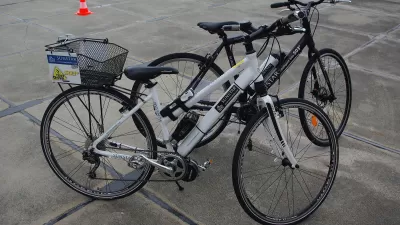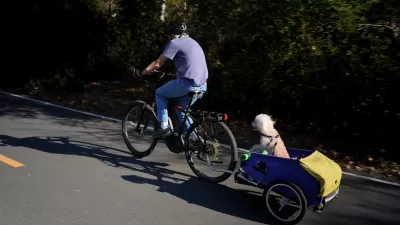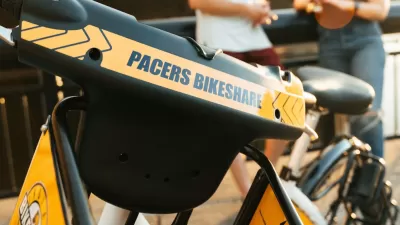As more people buy e-bikes for regular commuting and transportation, cycling advocates are calling for cities to beef up investment in safe infrastructure.

In the United Kingdom, "e-bike sales outstripped electric car sales in 2020," with one e-bike selling every three minutes. Yet, writes Lloyd Alter, "guess which mode of transport gets all the attention and the infrastructure investment, with the government spending another 20 million pounds ($27.75 million) on charging points that they often stick in the middle of sidewalks?"
Mark Sutton, editor of Cycling Industry News, cites a "lack of safe infrastructure" as "the biggest obstacle to growing cycling levels," calling for U.K. cities to step up investment in infrastructure and safety for cyclists. "For a true end-to-end journey to become viable by bike things like cycle parking must be factored in, employers will have to begin to cater and even incentivise non-car travel (property with showers and cycle-friendly access are now worth more) and residential areas will have to be linked to arteries. People won’t take that first step if the view outside their door is terrifying."
The bike boom is also gaining support from an unlikely ally: real estate developers. Alter describes Sutton's theory: "Developers want to build more, but they know that there isn't room for a lot more cars, which 'spill out of our own individual spaces and on to public land, where in theory they have no real right to be.'"
In the U.S., e-bike sales also jumped by 145% over 2019, while electric car sales dropped slightly, but the federal government's infrastructure plan only allocates $20 billion for road safety programs that benefit cyclists and pedestrians, compared with $174 billion for vehicle electrification. Critics worry that "funneling billions into vehicle electrification will continue to prop up our car-centric transportation system and enrich car companies instead of challenging car dominance with investments that reduce the need for cars." As Alter writes, "we shouldn't lose sight of the fact that there is a serious e-bike boom happening right now, or that we can't keep expanding our cities horizontally and vertically without reducing the proportion of people who drive cars, electric or gas—there simply isn't enough room."
FULL STORY: The E-Bike Spike Continues With 1 Selling Every 3 Minutes

Study: Maui’s Plan to Convert Vacation Rentals to Long-Term Housing Could Cause Nearly $1 Billion Economic Loss
The plan would reduce visitor accommodation by 25,% resulting in 1,900 jobs lost.

North Texas Transit Leaders Tout Benefits of TOD for Growing Region
At a summit focused on transit-oriented development, policymakers discussed how North Texas’ expanded light rail system can serve as a tool for economic growth.

Why Should We Subsidize Public Transportation?
Many public transit agencies face financial stress due to rising costs, declining fare revenue, and declining subsidies. Transit advocates must provide a strong business case for increasing public transit funding.

How to Make US Trains Faster
Changes to boarding platforms and a switch to electric trains could improve U.S. passenger rail service without the added cost of high-speed rail.

Columbia’s Revitalized ‘Loop’ Is a Hub for Local Entrepreneurs
A focus on small businesses is helping a commercial corridor in Columbia, Missouri thrive.

Invasive Insect Threatens Minnesota’s Ash Forests
The Emerald Ash Borer is a rapidly spreading invasive pest threatening Minnesota’s ash trees, and homeowners are encouraged to plant diverse replacement species, avoid moving ash firewood, and monitor for signs of infestation.
Urban Design for Planners 1: Software Tools
This six-course series explores essential urban design concepts using open source software and equips planners with the tools they need to participate fully in the urban design process.
Planning for Universal Design
Learn the tools for implementing Universal Design in planning regulations.
Ascent Environmental
Borough of Carlisle
Institute for Housing and Urban Development Studies (IHS)
City of Grandview
Harvard GSD Executive Education
Toledo-Lucas County Plan Commissions
Salt Lake City
NYU Wagner Graduate School of Public Service





























